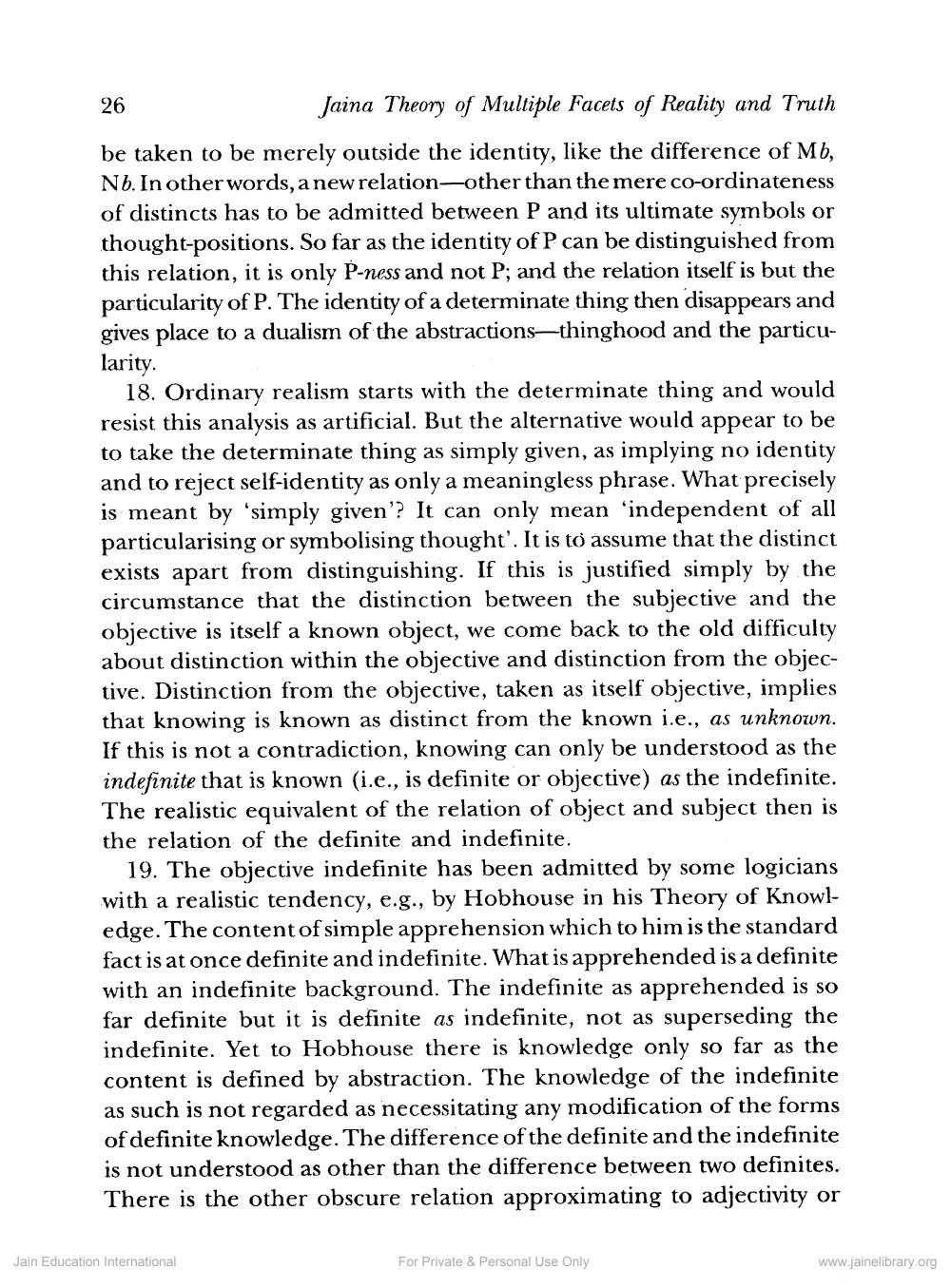________________
26
Jaina Theory of Multiple Facets of Reality and Truth be taken to be merely outside the identity, like the difference of Mb, Nb. In other words, a new relation—other than the mere co-ordinateness of distincts has to be admitted between P and its ultimate symbols or thought-positions. So far as the identity of P can be distinguished from this relation, it is only P-ness and not P; and the relation itself is but the particularity of P. The identity of a determinate thing then disappears and gives place to a dualism of the abstractions—thinghood and the particularity.
18. Ordinary realism starts with the determinate thing and would resist this analysis as artificial. But the alternative would appear to be to take the determinate thing as simply given, as implying no identity and to reject self-identity as only a meaningless phrase. What precisely is meant by simply given'? It can only mean 'independent of all particularising or symbolising thought. It is to assume that the distinct exists apart from distinguishing. If this is justified simply by the circumstance that the distinction between the subjective and the objective is itself a known object, we come back to the old difficulty about distinction within the objective and distinction from the objective. Distinction from the objective, taken as itself objective, implies that knowing is known as distinct from the known i.e., as unknown. If this is not a contradiction, knowing can only be understood as the indefinite that is known (i.e., is definite or objective) as the indefinite. The realistic equivalent of the relation of object and subject then is the relation of the definite and indefinite.
19. The objective indefinite has been admitted by some logicians with a realistic tendency, e.g., by Hobhouse in his Theory of Knowledge. The content of simple apprehension which to him is the standard fact is at once definite and indefinite. What is apprehended is a definite with an indefinite background. The indefinite as apprehended is so far definite but it is definite as indefinite, not as superseding the indefinite. Yet to Hobhouse there is knowledge only so far as the content is defined by abstraction. The knowledge of the indefinite as such is not regarded as necessitating any modification of the forms of definite knowledge. The difference of the definite and the indefinite is not understood as other than the difference between two definites. There is the other obscure relation approximating to adjectivity or
Jain Education International
For Private & Personal Use Only
www.jainelibrary.org




